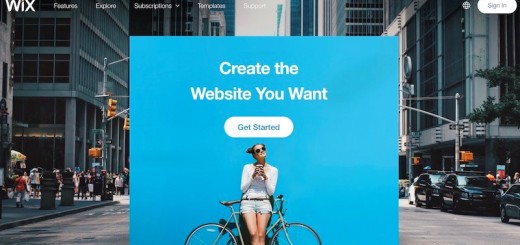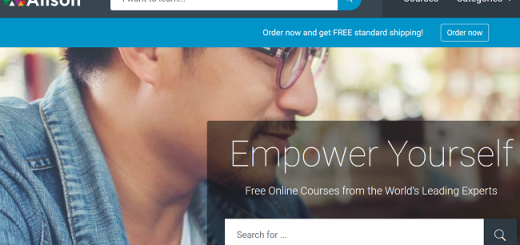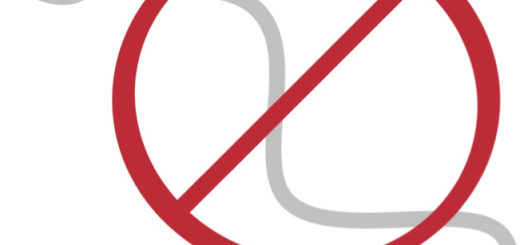How to work together as designers
1Like many designers I would rather work alone. Just me with my ideas hunched over a desk listening to my choice of music, and working my preferred hours -in most cases that means until 3am. As a freelancer I have the luxury of being independent and I like that a lot. So when a client invites me to collaborate with another designer on a particular project, my inner Gremlin comes out.
However, I will admit that after an hour or so of brainstorming with other designers I am quickly reminded of why creativity is so fantastic; the sky is the limit!
Going over ideas together creates endless possibilities and opportunities that I certainly would not have thought of by sitting at my desk alone. As designers we feed off each other to do so much more than unite our skills to get a job done.
Some of the most magnificent groundbreaking campaigns came about because of the creativity that was ignited by artists working together. Brainstorming sessions I have had with other designers have sparked ideas that have later been fruitful for my own solo work.
Because it’s hard enough for designers to decide on the same pizza toppings on a lunch break, there are a few things to keep in mind from the get-go when collaborating to keep things peaceful, running smoothly and most of all, getting the job done successfully.
Understanding the Designer Mindset to Avoid Conflicts
One might assume that productive and creative designers easily combine to form productive and creative design teams, but often, the opposite of that happens.
Graphic designers place a great deal of importance on their creativity and time, as they should, and the results are often extremely fragile.
When artistic individuals are put together to work on problems that are complex, time-constrained and challenging, the result of too much artistic friction is conflict. In most cases, no one is wrong. In fact, everyone is usually right in some form or another. The only “problem” is that too many ideas can be hard to successfully collect and pin down for one over-arching idea.
From my experience, perhaps one of the most common well-intentioned responses out of productive people working together is getting frustrated when things are not getting done because of all the “collaborating.”
Often these professionals are the ones that throw their hands up first. Disengagement, heated emotions and hurt feelings are ultimately some of the hardest things to overcome. They are essentially the other half of a designer’s job. And, because designers often work solo they are not used to this type of hurdle in a job.
In some cases, it might be important for artists working together to have the chance to break off into their own work station and work alone on their portion of the project.
Just because the team is “working together” does not mean they have to be in the same room. This might even be a huge relief for some individuals. They can understand their role in the project while still feeling as if they are working as an individual designer.
For you as a designer it’s important to communicate in which way you work most effectively.
When handling conflicts it is important that everyone has an opportunity to have their voice heard. Whether they are agreed with or not, everyone should be able to speak and share their ideas, thoughts and opinions about the project.
Even if it is a team of two or three people, you could write the individual thoughts down on a whiteboard so everyone can see them. A collaboration should be an equal effort between everyone with all parties pulling their weight equally toward the goal of the project.
Equal does not always mean quantity. Some designer may contribute something small but very important, like a type treatment, picture or logo that makes a huge influence on the success of the overall project.
Keep in mind it is all for the good of the team and the happiness of the client.
Style Definitions And How Each Different Piece Can Fit
Art is wonderful because there are so many different styles and designers. Creativity is unlimited and thus brings an abundance of talent and originality.
In a lot of ways gathering creativity is like herding cats.
With that understanding, each project team should have a manager. That can be a responsible person from the group – if that does not cause more unwanted friction – or an outsider to the project who is just there to delegate responsibilities. Larger companies assign creative directors as keepers of the overall creative vision.
He can make sure you are communicating with your fellow teammates to avoid overlapping work and to ensure that everything is in line with the desired style.
The manager does not have to be a formal role, it can very well be the most experienced designer in the team taking on a natural leadership position. Somebody who’s good at keeping everybody in the loop about what’s happening and what’s needed is a good fit for the role.
He should also keep updated on the work in progress and check if the different design elements that are being designed fit together. Even if a style guide is followed, design pieces still may not fit together completely right and it’s best to see that as early as possible.
Once I was doing some contracting work for a small advertising agency and the Assistant Creative Director gave me a very specific assignment. She directed everyone for the project so much so that we did not need to work much together with others.
For me, this was a relief. I could do my work in peace and then turn it in to the group. However, after spending a day and a half on the project, things were going well and I decided to take a small coffee break.
I ran into another freelancer who was also working on the project and asked him how things were going. To my surprise, he was working on the very same landing page and logo piece as me!
I thought that there must have been some mistake. When I addressed the Assistant Creative Director she apologized for the mistake but decided to have us continue to see who came up with the better idea.
I am not a competitive person and I take pride in my work so I was a little heated.
What I thought was going to be an easier collaboration assignment was turning out to be a nightmare!
The biggest lesson I got from that story is to not take anything personally when it comes to your profession. That is still hard for me as I’m sure it is for a lot of people in creative professions.
Another important lesson is that while I prefer working by myself, talking to your team and sharing thoughts is a great way to prevent unexpected situations.
Additionally, working in a large team can be a fantastic learning experience for your career.
Working together under deadlines
There isn’t a freelancer or designer out there who has not been stressed by deadlines. Some people work best by procrastinating and getting things done at the 11th hour while others stick to an elaborate timeline with ease.
During a collaboration you will be working with all types of people on all types of schedules.
Some may have families and kids or other projects and jobs they are working on simultaneously. To keep the peace, a timeline is crucial.
Before beginning the project ask each person to describe their work style. One of the most frustrating things that can happen is putting a strict timeline-follower with a procrastinator. Punches will fly.
A procrastinator does not work well with someone constantly checking up on them. They know the deadline, it is always in the back of their mind, and they know what it will take to get it done.
If you are working with a procrastinator, one thing I find very effective is to tell them a sooner deadline. If the project is due at 5pm, I say something along the lines of “We are all getting together at 10am with our finished work.”
Most of the team will already have their work done and won’t find this an issue, and, it is important to get together to discuss the finished project before turning it in to the client.
So, either way it is a win-win for everyone. If you have a militant teammate who is too adamant about keeping everyone on the timeline, give her something else to do. Even if it is ordering lunch or scheduling meetings.
This will keep her occupied with just one more thing on her plate so she is less likely to bother everyone. Lucille Ball once said, “If you want something done get a busy person to do it!” meaning their time management skills are impeccable.
Collaborating as a team is an excellent way to develop professional skills, social skills and networking skills. For me as a freelancer, the more people I work with and who can see my work, the more opportunities I will have available.
Being able to work with others is an important skill in any profession and it says a lot about your character. You will be surprised at how often you are called upon for projects and even leading projects, if you have professional and effective people skills.
The next time you are asked to work on a team project, jump at the chance!





Amanda I understand your statements. There must be good words of mouth between those two designers and must have the good collaboration so that they can meet there deadlines according to the clients requirements.
Thanks